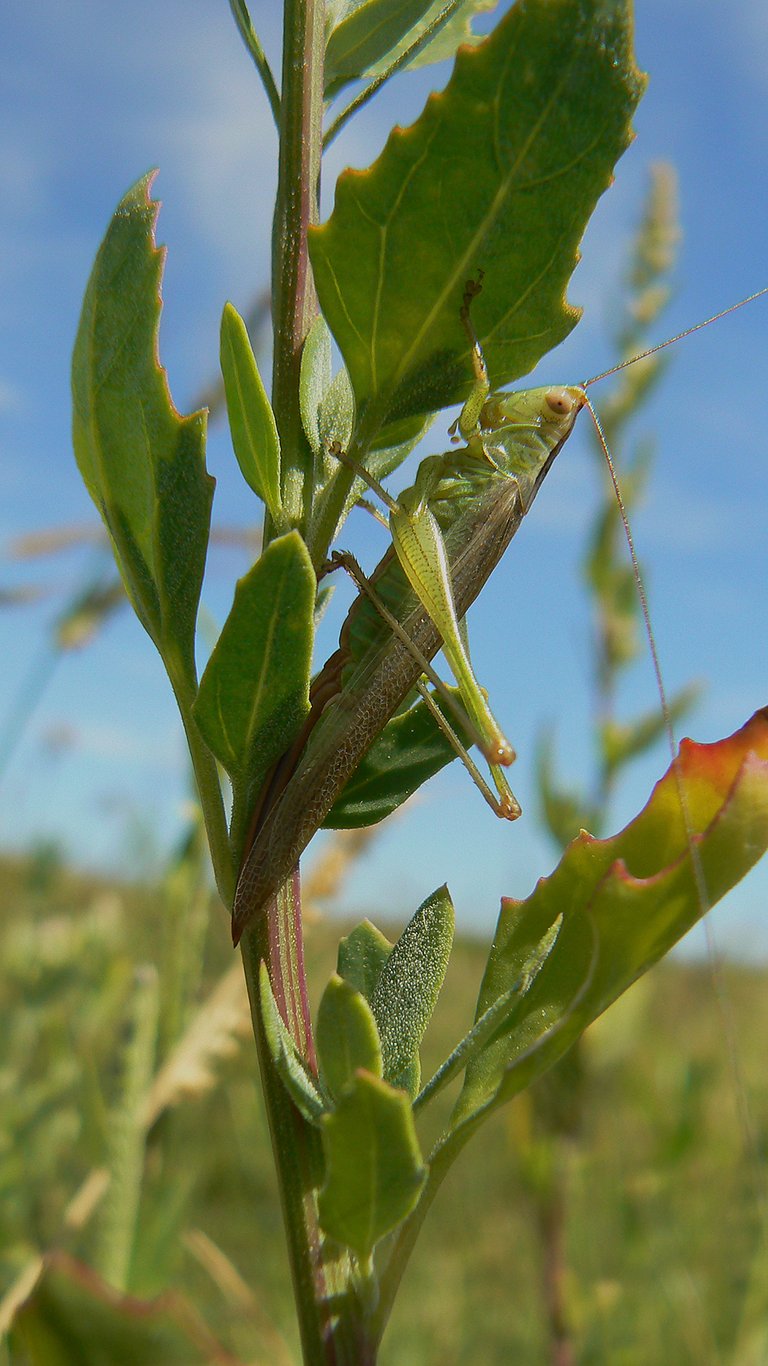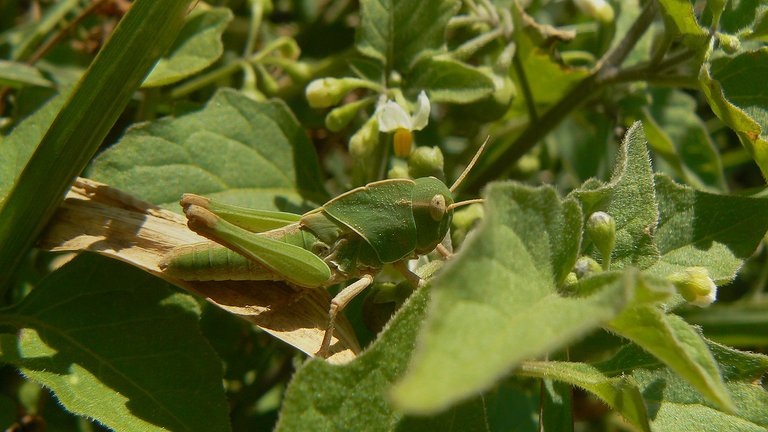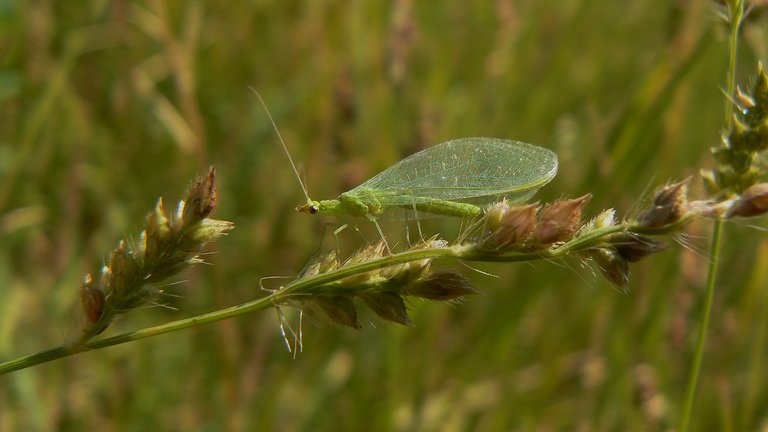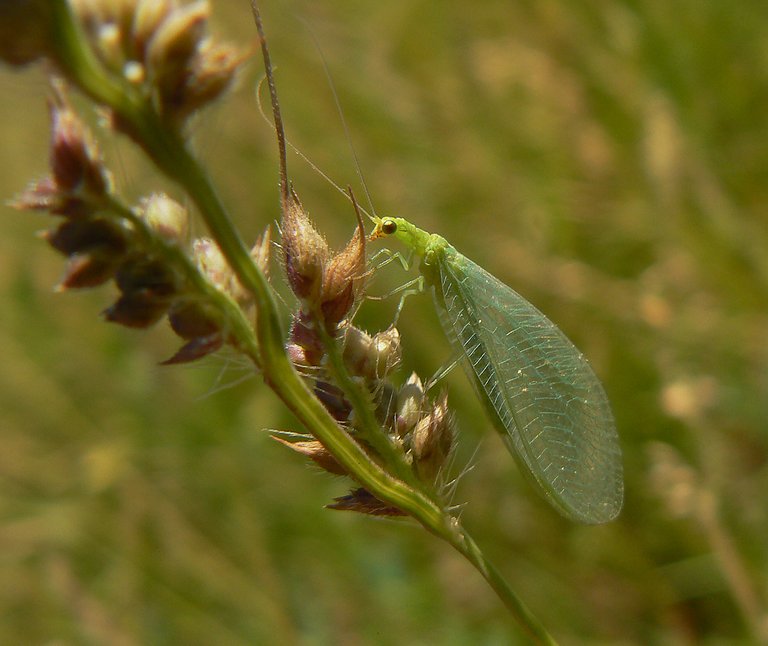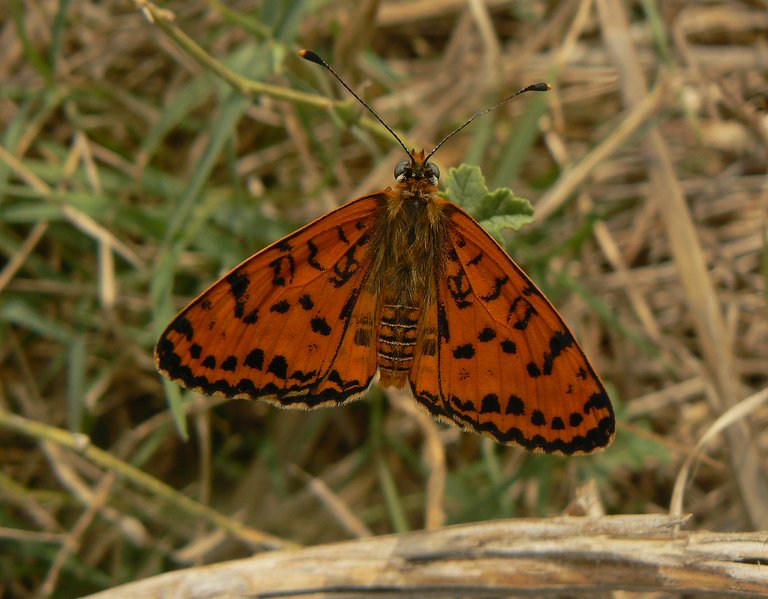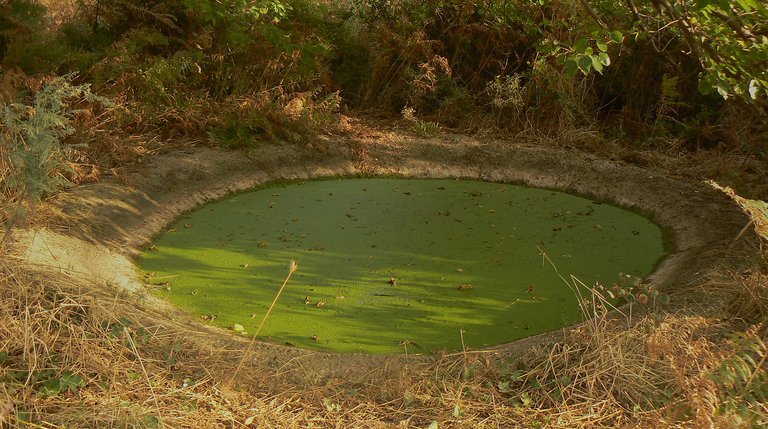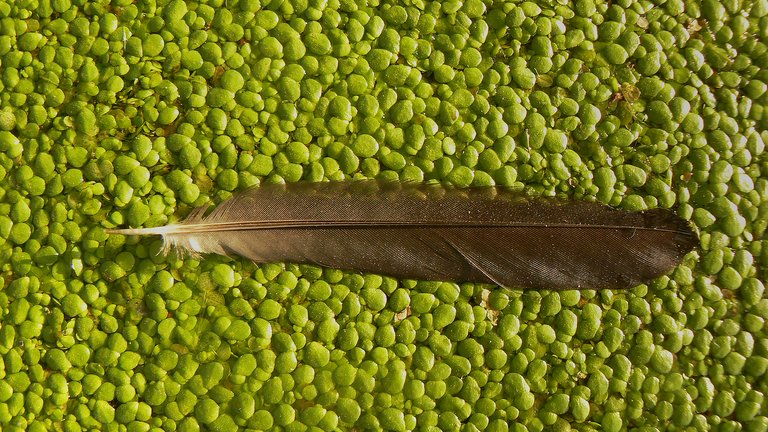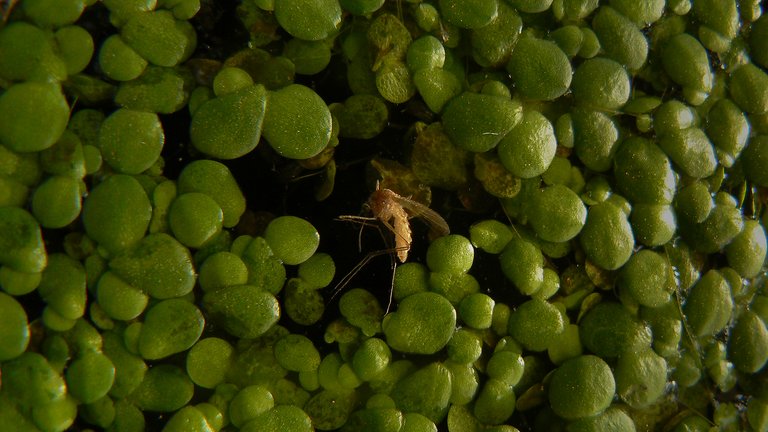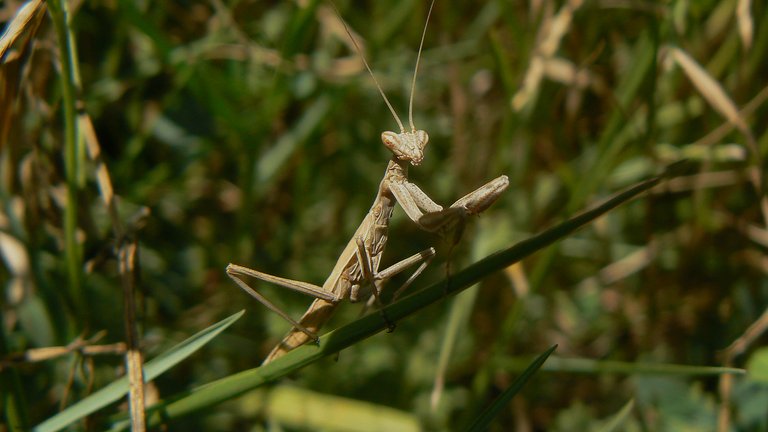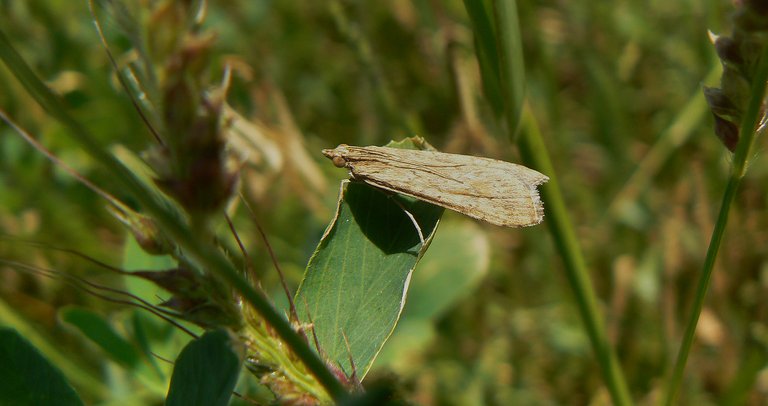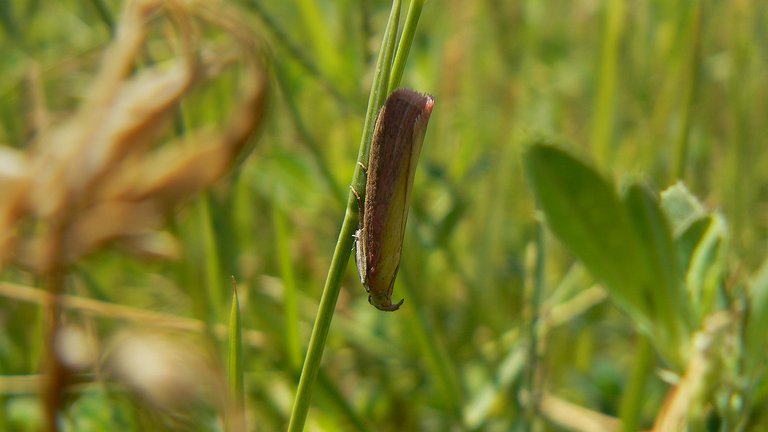The 9th of August 2016 was a typical hot & sunny summer day. I spent the whole afternoon rambling across the meadows of the coastal area called Marlera ...

... and I photographed a bunch of insects ...
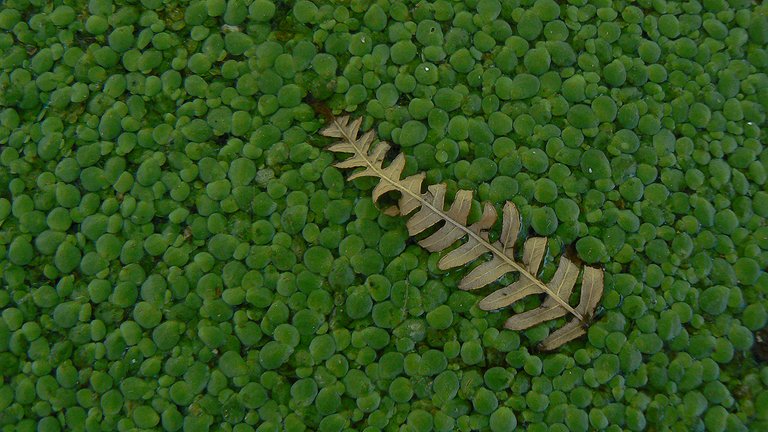
... and some other details along the way.

The moth shown in this and the following photograph ...
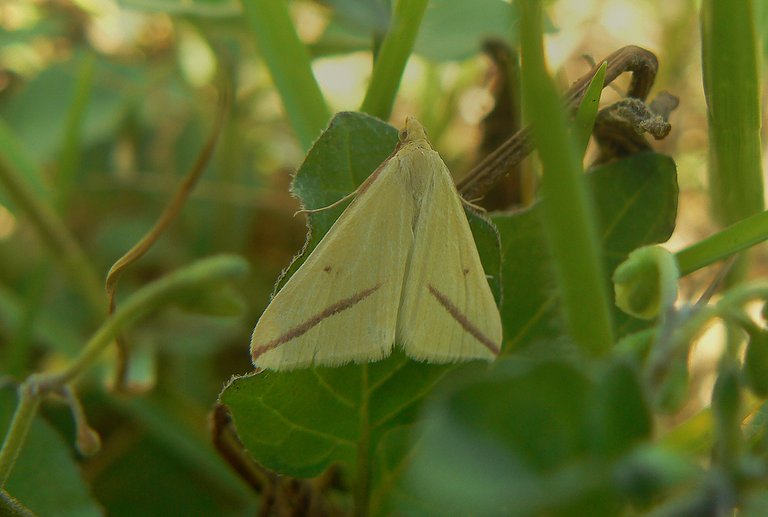
... is the Rhodometra sacraria, a species from the Geometridae family.
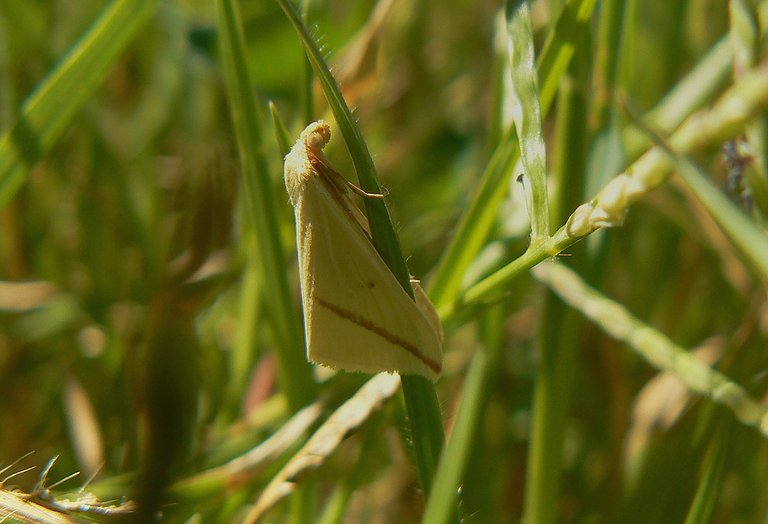
In this shot, the moth is resting in a different pose, a pose that makes it harder to notice among the herbaceous vegetation.
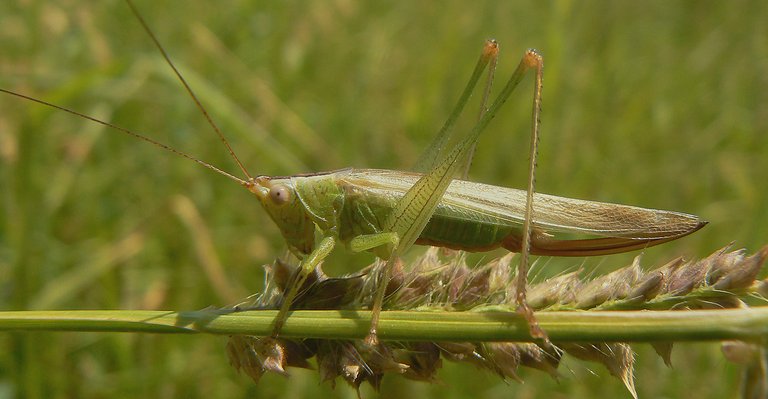
This is the Conocephalus fuscus ...

... commonly known as the long-winged conehead.
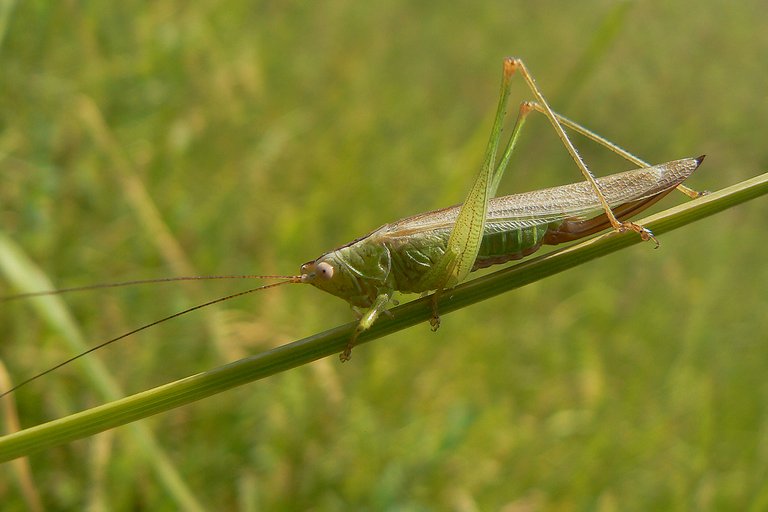
It's a fairly small, elegant bushcricket from the Tettigoniidae family. I mean, all bushcrickets belong to that family, and the previous sentence probably doesn't make that fact clear.

In this shot, the conehead is cleaning its hind leg's foot. In the following photograph ...
... the bushcricket is successfully camouflaged on the Chenopodium album plant.
If you take the time to explore a bit the chaotic details of this shot, you will certainly notice a well-camouflaged grasshopper.

The name of the species is Locusta migratoria, and this is the nymph, a young individual that hasn't developed the wings and reached adulthood.
The elegant insect with beautiful wings, shown in this and the following two photographs ...
... is the Chrysoperla carnea ...
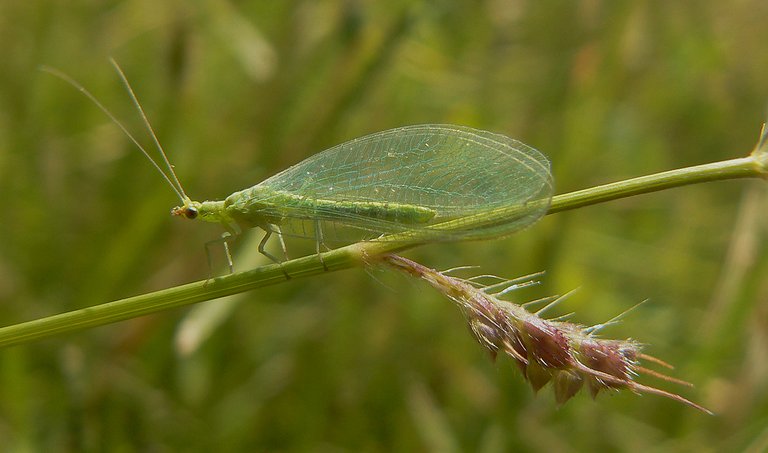
... commonly known as the common green lacewing.
This is the Melitaea didyma, a butterfly from the Nymphalidae family. In the following photograph ...
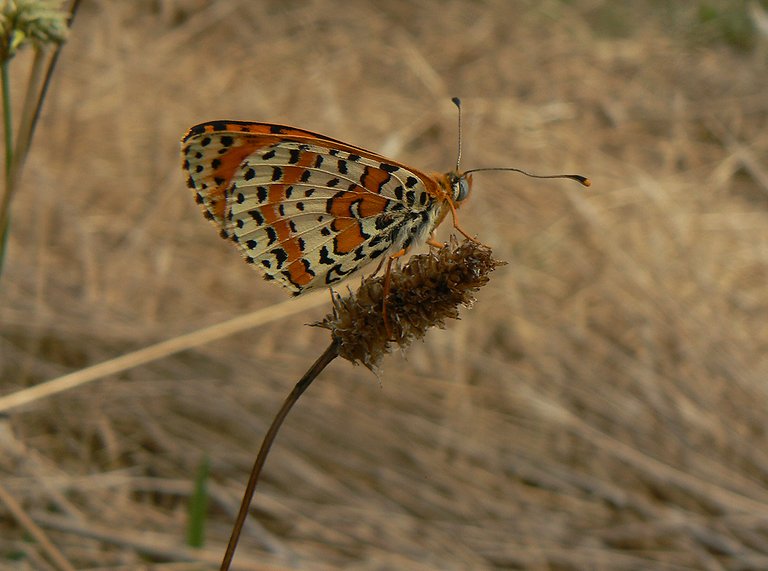
... you can take a look at the colors and markings on the lower surfaces of its wings.
At one point, I came across this small pool made to be a watering place for birds and mammals. The vivid green color of the surface ...
... was provided by the swollen duckweed (Lemna gibba),
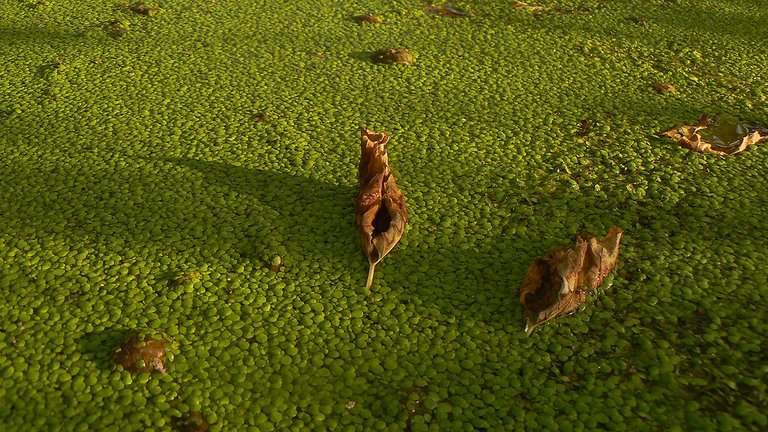
The dry fragments fallen from the surrounding vegetation looked great on that green texture. In this photograph, the focus is on the dry leaves of the nearby mulberry tree. Branches of that tree create an interesting roof-like construction above the small pond.

Fern also grows close to the water.
Here you can see a piece of dry, brown fern surrounded by duckweed.

Here you can see a small green leaf that fell from one of the surrounding plants, can't tell you which one exactly.
As the warm summer wind was blowing, the branches of the tree were moving, creating an interesting interplay of shadows and light on the surface of the watering place.
You can see a bit of that movement clumsily encapsulated in this animated GIF made of two photographs.
Here you can see a feather left by a bird who came for a drink.
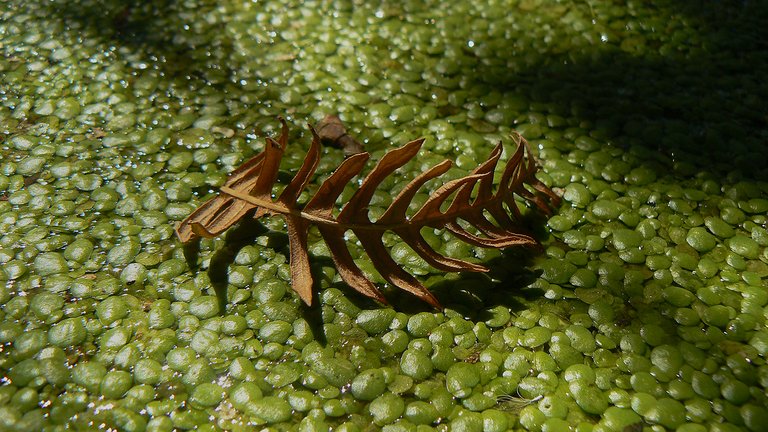
A bent piece of fern is the main protagonist of this shot.
In the center of this photograph, you can see the corpse of some kind of small mosquito-like fly.
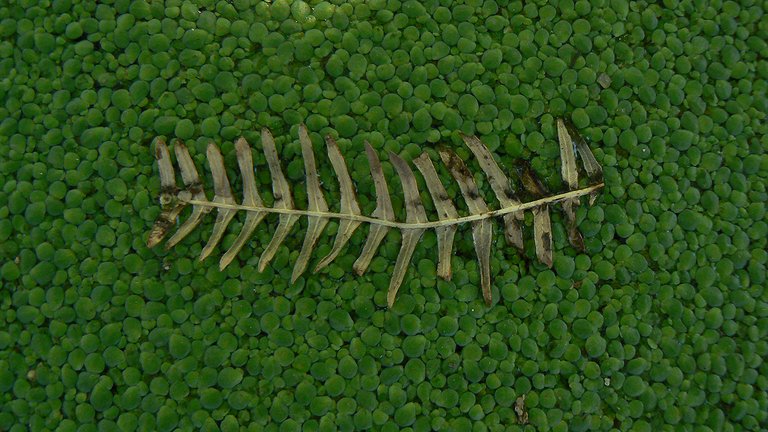
This is another dry fragment provided by the nearby fern.

And that's it. It's time to leave the small pond and continue with insects.

Here you can see an interesting grasshopper that mimics the surrounding vegetation. This is Acrida ungarica, commonly known as the Mediterranean slant-faced grasshopper. A bit further on the same meadow...
... but closer to the ground ...
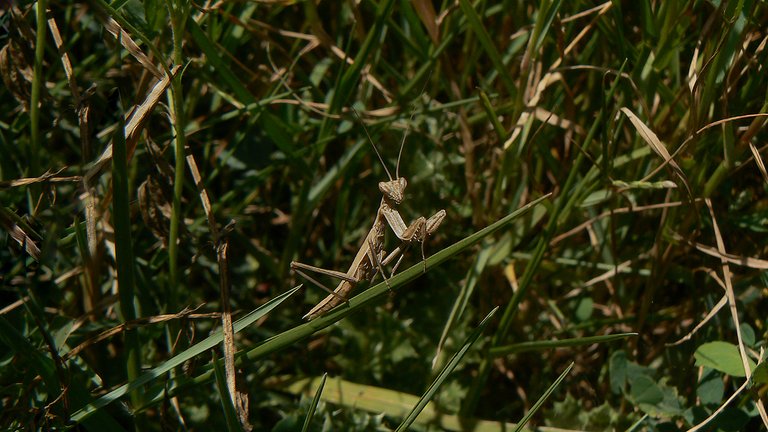
... I found another well-camouflaged insect - a mantis.
This is a nymph, a young, immature European mantis (Mantis religiosa).
Most moths in this area are also well-camouflaged and hard to notice.
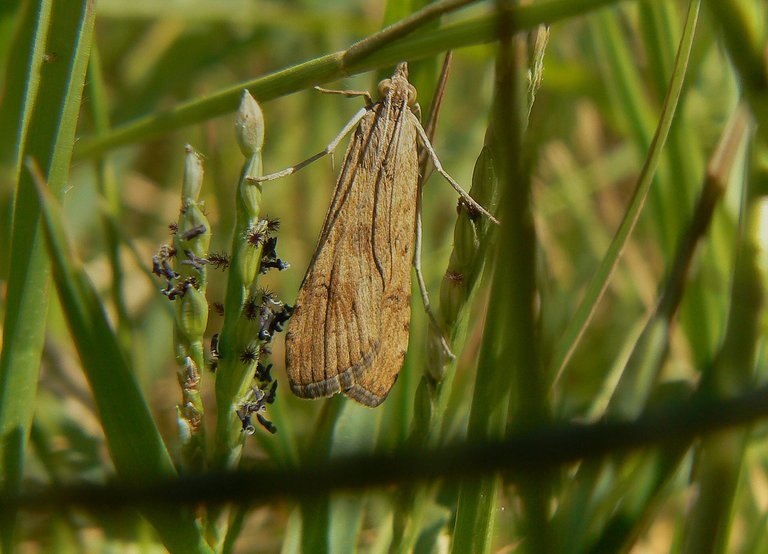
In this and the previous photograph, you can see the Nomophila noctuella, a species from the Crambidae family.
Here you can see a small moth from the Pyralidae family. The name of the species is Oncocera semirubella. The moth, shown in the following photograph ...
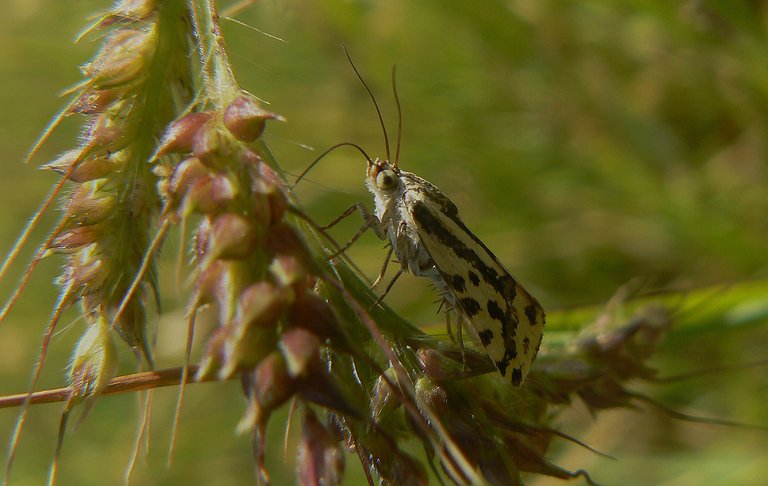
... belongs to the Noctuidae family. The name of the species is Emmelia trabealis. In the following photograph ...
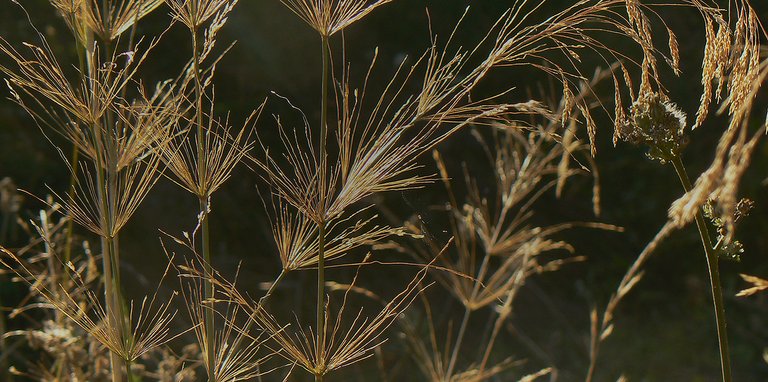
... you can take a look at the dry grass in the beautiful light of the late afternoon.
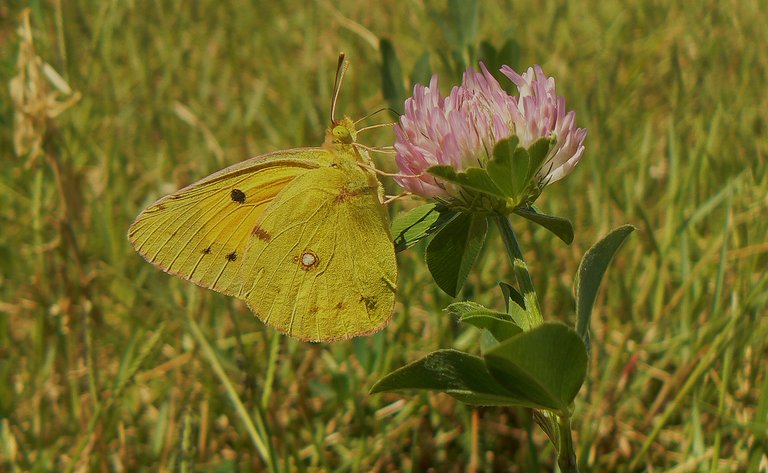
Here you can see another butterfly for a change. This is the Colias croceus, a species from the Pieridae family.
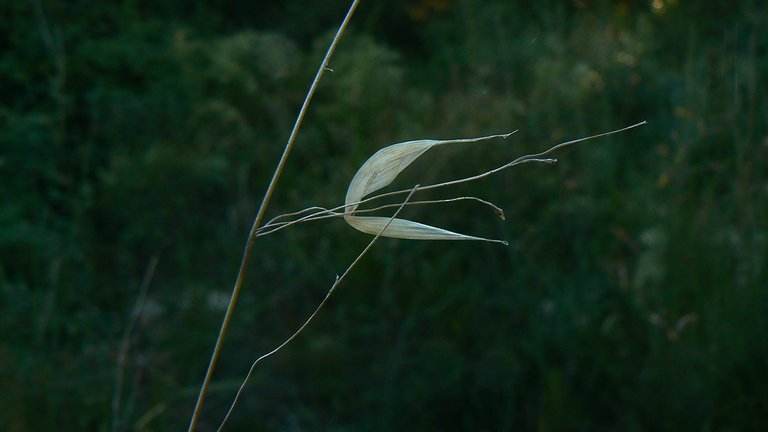
In the evening I photographed another detail of the dry grass, in a different type of light this time ...
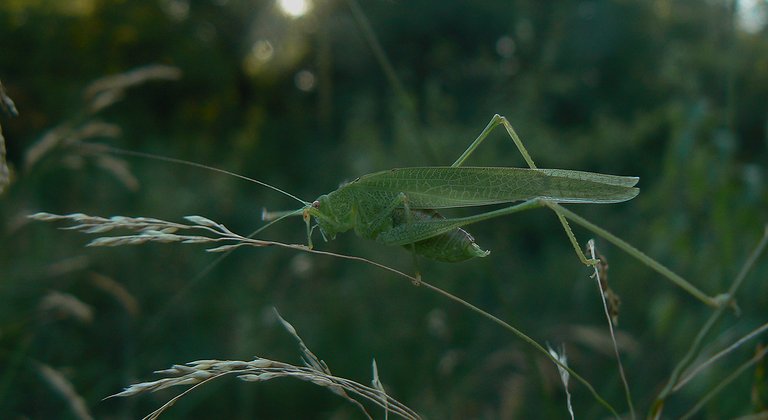
... and this Phaneroptera nana bushcricket that was climbing the tall grass.
AND THAT'S IT. AS ALWAYS HERE ON HIVE, THE PHOTOGRAPHS ARE MY WORK
The following links will take you to the sites with more information about the protagonists of this post. I found some stuff about them there.
https://en.wikipedia.org/wiki/Rhodometra_sacraria
https://en.wikipedia.org/wiki/Conocephalus_fuscus
https://en.wikipedia.org/wiki/Migratory_locust
https://en.wikipedia.org/wiki/Chrysoperla_carnea
https://en.wikipedia.org/wiki/Melitaea_didyma
https://en.wikipedia.org/wiki/Lemna_gibba
https://en.wikipedia.org/wiki/Acrida_ungarica
https://en.wikipedia.org/wiki/European_mantis
https://en.wikipedia.org/wiki/Nomophila_noctuella
https://en.wikipedia.org/wiki/Oncocera_semirubella
https://en.wikipedia.org/wiki/Emmelia_trabealis
https://en.wikipedia.org/wiki/Colias_croceus
https://en.wikipedia.org/wiki/Phaneroptera_nana
